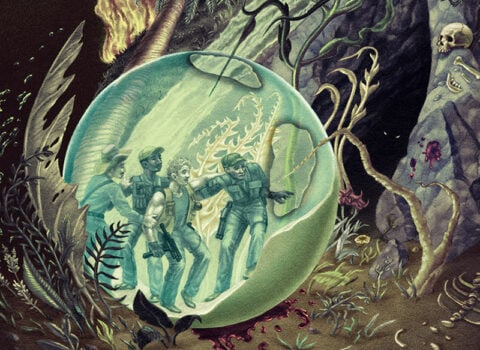There are many ways that one can complain about the state of the world of letters. The quantitative approach charts the reduction in sales of “serious literature,” and further bolsters such charts with numbers that crunch editorial jobs being lost or presses that have gone out of business. The qualitative approach tries, flailingly, to suggest that there was a better time in the past, a golden age when the life of letters was more serious, when the cultural air held the tang of new pages being turned, and that fireside evenings were spent debating the unities of time, place and action as the appropriate underpinnings of stagecraft–those opposing such rules left to reach–nay, driven–for the daggers in their boots.
To my mind, when I complain privately, I lobby silently for certain advents that don’t seem to come to pass. For example: a new novel is being served back and forth, like a shuttlecock, over the cultural net this week: Jonathan Littell’s The Kindly Ones. Written from the point of view of a SS capo who managed to escape the post-war round-up, this 1,000 page tale is told by a murderer writing his memoirs of a murderous time and his complicity in it. Setting aside my sense of how well the novel manages that task, what the novel is inarguably trying to do, through the lens of the imagination, is offer a different kind of picture of the unimaginable than our many exemplary histories have.
Naturally, there will be very different kinds of biases at work when a reader approaches such a book. There will be those who feel that we simply do not need such a fiction, having more than enough fact about the subject that any fiction is superfluous; there will be those who feel that we simply do not want such a fiction, finding it atrocious to make fiction out of atrocities; there will be those, as well, who do not like fictions about unlikable people, and assume that no good or no use can come from spending time in the mind of someone with whom one would not like to have to sit next to on the Hampton Jitney. I would submit that these categoricals, and the kinds of reviewers who hold such proscriptive aesthetic points of view, are diminishing: some kinds of narrowness are narrowing.
Whereas there are broadening kinds of narrowness. This week, as I read initial reports of the Littell, I can’t help but wonder what William T. Vollmann thinks of Littell’s book. After all, Vollmann’s 3,000 page Rising Up and Rising Down seems to rather adequately suggest his intellectual bona fides on the subject of violence as a central feature of civilization, just as his fictional output seems to dramatize that interest.
As such, it is my hope that some smart editor asked Vollmann to review the book, and that Vollmann did indeed review it–a review that might soon appear. It is not that I would expect him to have the correct take (whatever that might mean) but that he surely would have a very interesting take. That said, absent a review by Vollmann of the Littell, why not read Vollmann’s essay, “Seeing Eye to Eye,” in the new and excellent issue of Bookforum, on photography and the Third Reich. It’s fascinating, in its narrow and deep way. It begins:
How should we parse a documentary image that directly or indirectly portrays evil, injustice, anguish? What rights and duties, if any, does our understanding engender?
I begin with Paul Garson’s Album of the Damned: Snapshots from the Third Reich. The majority of the photographs were composed, we are informed, by Wehrmacht soldiers who were amateur photographers. How could such a compilation fail to fascinate? Unfortunately, while Garson the compiler deserves my gratitude, Garson the commentator is extraordinarily unequal to his subject. At the zenith of his acumen, he compares one benign-looking German soldier to Sergeant Schultz of the television show Hogan’s Heroes. To a photograph of two soldiers carrying the upside-down carcass of a wolf, he affixes the caption “Werewolf,” which affords an excuse to ramble on about Hitler’s headquarters “Wolf’s Lair,” as well as the “Werewolf” detachments of desperate Nazis who tried to sabotage the approaching Allies at the end of the war.
It continues here. I suggest it as your weekend read.
































































































